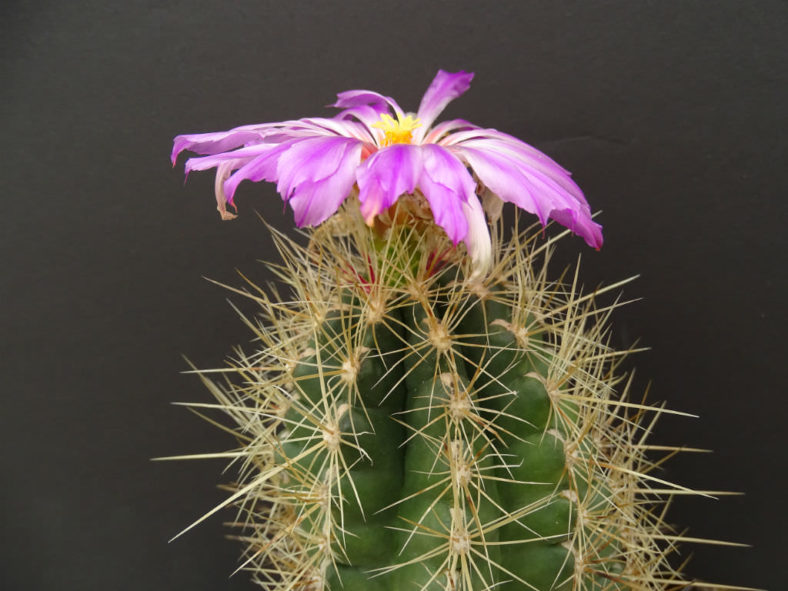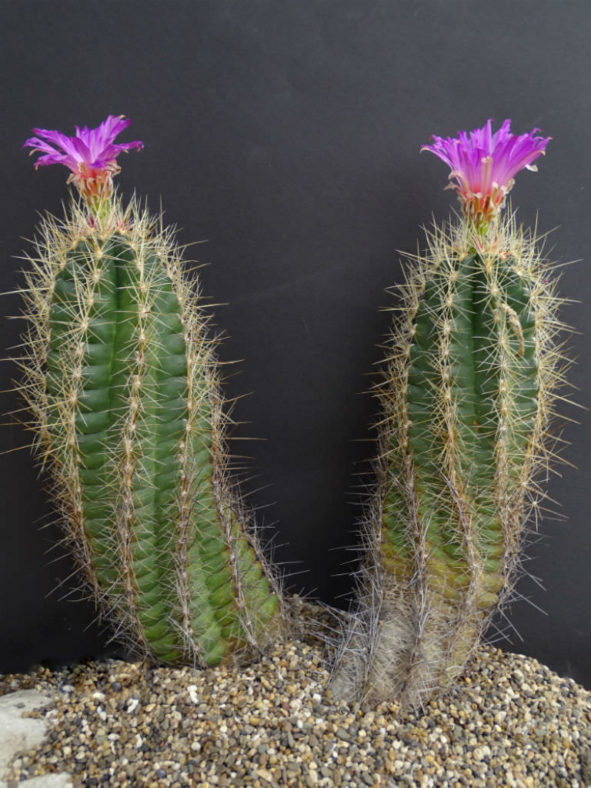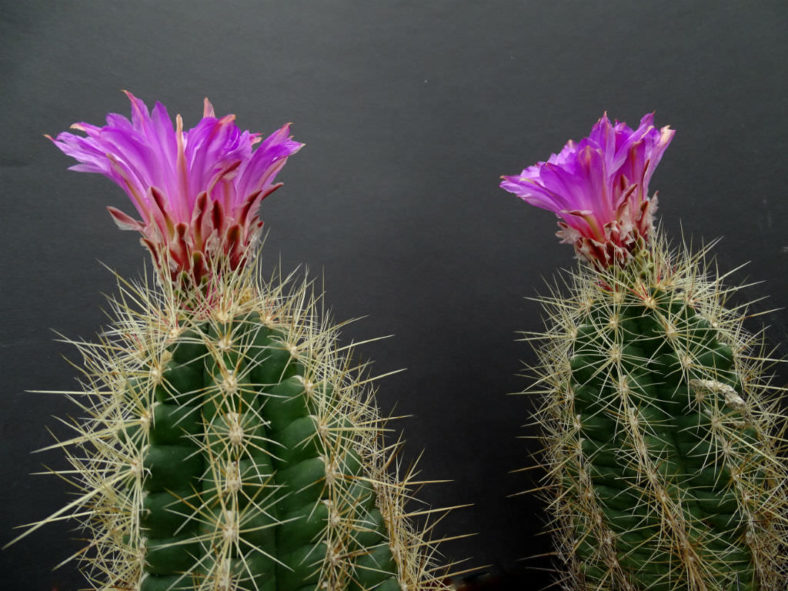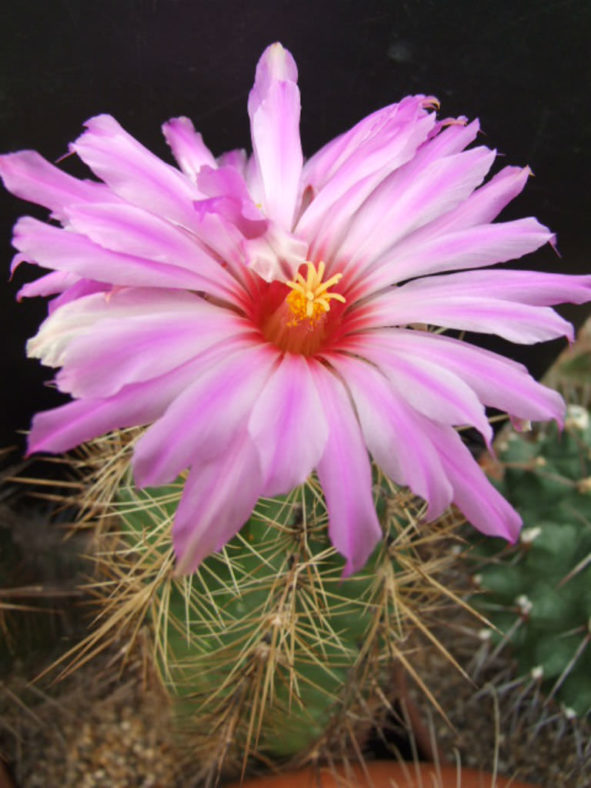Scientific Name
Thelocactus bicolor (Galeotti ex Pfeiff.) Britton & Rose
Common Name(s)
Glory of Texas
Synonym(s)
Echinocactus bicolor, Echinocereus bicolor, Thelocactus schottii
Scientific Classification
Family: Cactaceae
Subfamily: Cactoideae
Tribe: Cacteae
Genus: Thelocactus
Origin
Thelocactus bicolor is widely distributed in the northern Chihuahuan Desert of the United States (Texas) and Mexico.
Description
Thelocactus bicolor is a small cactus with an egg-shaped stem with 8 to 13 ribs lined with clusters of long reddish spines. It usually grows solitary but may form a clump of few stems with age. The stem can grow up to 15.2 inches (38 cm) tall and 4 inches (10 cm) in diameter.
The flowers are purplish-pink, fading to white, have a red throat, and appear and appear in summer. They are funnel-shaped and can reach up to 3.2 inches (8 cm) in diameter.

Hardiness
USDA hardiness zones 9a to 11b: from 20 °F (−6.7 °C) to 50 °F (+10 °C).
How to Grow and Care
Overall, these are beautiful cacti for dish gardens or indoor displays. A collection of them is especially attractive, as they look like a collection of balls tossed upon the ground. However, it is critical never to let these cacti be exposed to prolonged periods in water or even very high humidity. They will suffer from rot in the presence of humidity. Echinocactus are vulnerable to pests, including aphids, mealybugs, scale, and whitefly. Identify the infestation as early as possible and treat it with the leave toxic option.
It is best to repot at the beginning of the growing season or summer. To repot a cactus, ensure the soil is dry before repotting, then gently remove the pot. Next, remove the old soil from the roots, removing any rotted or dead roots.
Learn more at How to Grow and Care for Echinocactus.
Links
- Back to genus Thelocactus
- Succupedia: Browse succulents by Scientific Name, Common Name, Genus, Family, USDA Hardiness Zone, Origin, or cacti by Genus
Photo Gallery
Click on a photo to see a larger version.


